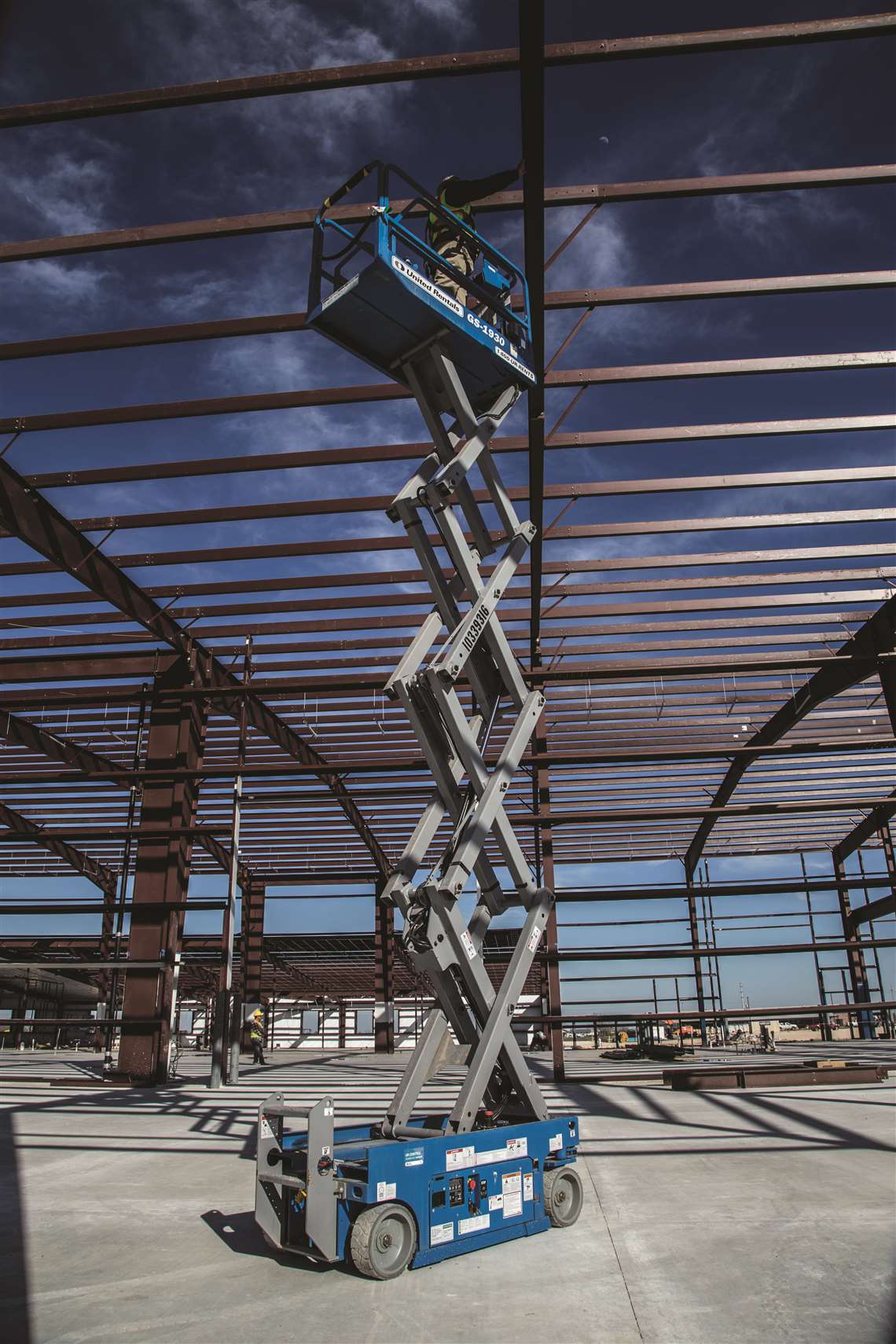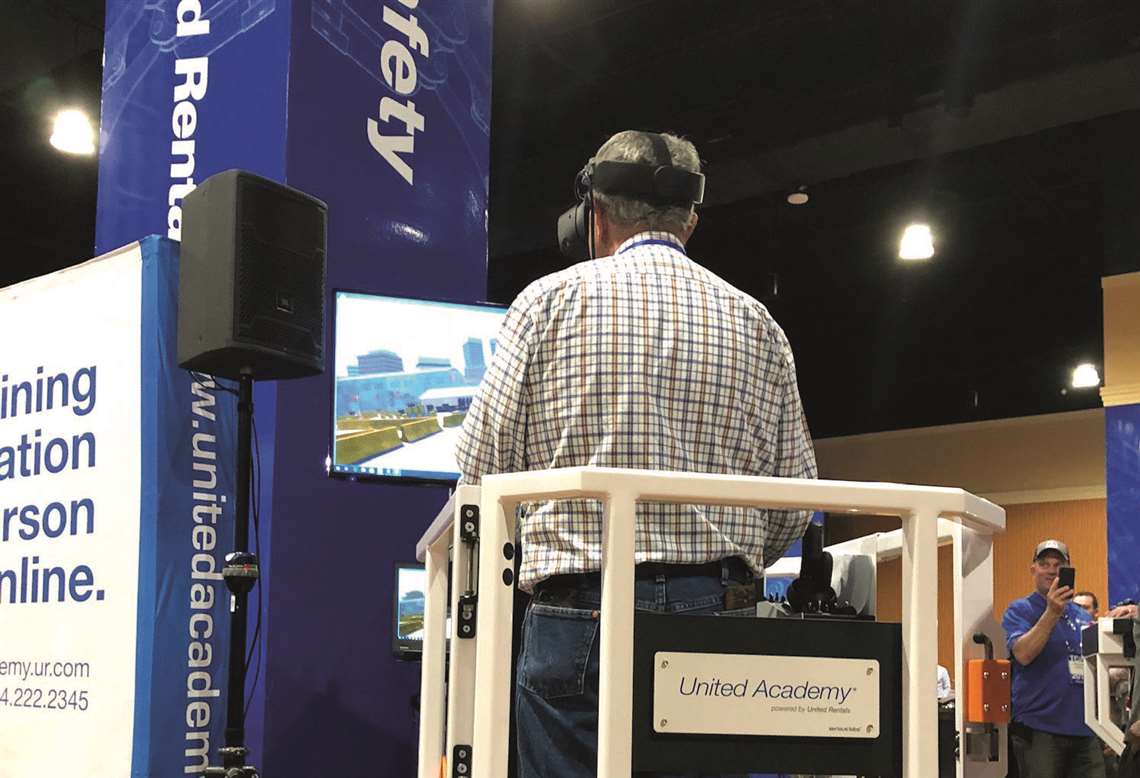United Rentals on the evolution of operator training
15 June 2021
Baldemar Guerrero, director of United Academy, United Rentals, discusses how training has evolved
Operating heavy construction equipment is complex and can come with safety risks for the operator and surrounding crews. In addition to the potential safety risks, appropriate operator training is critical and most often a requirement. For example, according to OSHA, anyone over the age of 18 who is not properly trained and certified to operate a forklift is in violation [29 CFR 1910.178(l)(1)].
Safety training is a critical component of a safe and productive worksite. Just as the construction industry is evolving, so is operator training. In recent years, training has become increasingly reliant on digital capabilities. This technology-driven focus has provided even more ways for crews to stay safe and compliant.
Here are some ways digital and technology are transforming worksite safety and compliance.
Training, competency assessment and recertification

Motion-based virtual reality (VR) simulations have been an emerging solution over the last few years. Boom lift and scissor lift simulators were among the first to be developed. Shortly after, forklift simulators gained popularity as well. These simulators can train someone on a counterbalance forklift or rough-terrain forklift, depending entirely on the selected set of controls plugged into the software.
Motion-based simulators let an operator-in-training get acquainted with the equipment in a virtual, risk-free environment. They can help the operator feel comfortable with standard operation before training on a real machine, and the employer can assess the level of competence. Plus, these simulators can come in handy for recertification. It’s a win-win-win.
However, the challenges brought on by the Covid-19 pandemic forced another evolution in safety training. While VR is still a cost-effective and efficient training tool, safety managers had to be agile with training options to accommodate new restrictions and precautions.
Keep the virtual
One thing remained constant: virtual. Although VR options are still available, safety managers leaned heavily on companies that offer virtual instructor-led training to keep crews compliant throughout the pandemic. Virtual training sessions allow some flexibility when it comes to scheduling and location. Companies that provide virtual instructor-led training can facilitate a training session from anywhere, anytime.
Virtual training may be a cost-saving option as well. Traditional training often means worksite productivity comes to a halt so the entire crew can participate. Virtual training allows for smaller sessions since the instructor isn’t on a real-time schedule constraint. Choose a trusted training provider that has the sessions that are needed, specifically counterbalance and/or RT forklift certification and boom/scissor lift certification.
Virtual instructor-led training is a flexible, cost-effective option for teams to stay up to date and compliant on the worksite.
Remote practice evaluations
Practical evaluations are an essential part of any jobsite training but Covid-19 restrictions may have paused many critical sessions. A training provider that offers remote practical evaluations can keep crews operating while ensuring operator basics are completed safely and efficiently.
The preferred method is still instructor-led training and evaluations. Still, digital platforms and programs with highly specific instructions have enabled teams to be evaluated and instructed safely without being in person.
Similar to virtual instructor-led sessions, remote practical evaluations provide a 1:1 experience with an instructor and participant. With clear instructions and visual requirements, the instructor can evaluate and instruct from anywhere, anytime.
Although less common, training providers who offer curbside remote practical evaluations allow for another alternative in sessions without setting foot in a branch or facility.
Continued evolution of training
Virtual and augmented reality changed the game for safety training. It opened doors to new ways of facilitating and learning critical operator courses and certifications. Digital capabilities have enabled flexibility and agility in training, which has come to be expected.

As the industry continues to evolve, so does safety training. Instructor-led training has started to increase again, and training companies are exploring new ways to keep the right information in front of teams. Micro-learnings and other forms of real-time content are on the horizon. Safety training will continue to blend learning styles, approaches and channels.
Look for a safety training provider that leans on digital capabilities for flexible, cost-effective and safe training. Keeping crews up to date and compliant is more important than ever, and finding a trusted partner to help you do just that is key.
STAY CONNECTED



Receive the information you need when you need it through our world-leading magazines, newsletters and daily briefings.
CONNECT WITH THE TEAM








